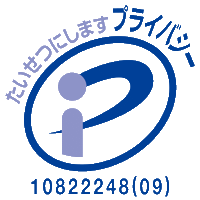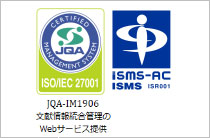ホームIMICライブラリMMWR抄訳2016年(Vol.65)合成カンナビノイドの使用による副作用の増加 ― ア・・・
2016/10/14Vol. 65 / No. 40
MMWR65(40):1108-1111
Increase in Adverse Reactions Associated with Use of Synthetic Cannabinoids — Anchorage, Alaska, 2015–2016
合成カンナビノイドの使用による副作用の増加 ― アンカレッジ、アラスカ州、2015年~2016年
2015年7月、Alaska Division of Public Health’s Section of Epidemiologyは合成カンナビノイド(SCs:脱法ドラッグ)の使用による副作用の増加を認識し、その臨床的転帰、アウトブレイクの特徴およびアンカレッジ周辺に出回るSCについて調査を開始した。2015年7月15日~2016年3月15日、SCによる副作用による救急搬送件数は1,351件であり、うちアンカレッジ市内の2病院の救急外来を2015年7月15日~9月30日の間に受診した167例のデータを入手し分析した。74例(44.3%)はSCの使用を自己申告し、93例(55.7%)はSCの使用が疑われる症例であった。氏名と生年月日のデータは128例にて得られ、104例(81.3%)は男性、年齢は34(12~62)歳であった。2/3以上の症例(115例、68.9%)は嗜眠状態、約1/3の症例(55例、32.9%)は不穏状態であり、11例(6.6%)は気管内挿管を必要とし、17例(10.2%)がICUに入院した。救急搬送1,351件のうち956件(70.8%)はホームレス生活者の多いアンカレッジのダウンタウン2k㎡エリア内にて発生し、氏名と生年月日データの得られた535例のうち、426例(79.6%)は男性、年齢は34(12~69)歳であり、199例(37.2%)は複数回搬送されていた(平均4.6回、2~24回)。調査開始前、2014年1月1日~7月14日のSCによる救急搬送は240件、1日平均0.4回であり、調査開始後は1日平均7.1回と17.8倍になっていた。SC化学物質として11種類が同定され、AB-CHMINAKA、MAB-CHMINACA、5F-AMBが多く認められた。SCs検査陽性であった17検体(68.0)には複数の化学物質が混入しており、電子タバコを利用して吸入できるようになっていた。また、死亡した10例の死後の血清検体のうち4件にてSC化学物質の代謝生成物が検出された。SCの使用は重篤な臨床転帰をもたらすため、アンカレッジ市内に出回るSCの同定と、司法および法的規制の必要性が示唆される。
References
- Law R, Schier J, Martin C, Chang A, Wolkin A. Notes from the field: increase in reported adverse health effects related to synthetic cannabinoid use—United States, January–May 2015. MMWR Morb Mortal Wkly Rep 2015;64:618–9.
- CDC. Notes from the field: severe illness associated with reported use of synthetic marijuana—Colorado, August–September 2013. MMWR Morb Mortal Wkly Rep 2013;62:1016–7.
- CDC. Notes from the field: Severe illness associated with synthetic cannabinoid use—Brunswick, Georgia, 2013. MMWR Morb Mortal Wkly Rep 2013;62:939.
- CDC. Acute kidney injury associated with synthetic cannabinoid use—multiple states, 2012. MMWR Morb Mortal Wkly Rep 2013;62:93–8.
- Kasper AM, Ridpath AD, Arnold JK, et al. Severe illness associated with reported use of synthetic cannabinoids—Mississippi. MMWR Morb Mortal Wkly Rep 2015;2105:1121–2. <http://dx.doi.org/10.15585/mmwr.mm6439a7>
- Castellanos D, Gralnik LM. Synthetic cannabinoids 2015: an update for pediatricians in clinical practice. World J Clin Pediatr 2016;5:16–24. <http://dx.doi.org/10.5409/wjcp.v5.i1.16>
- Longworth M, Banister SD, Mack JBC, Glass M, Connor M, Kassiou M. The 2-alkyl-2H-indazole regioisomers of synthetic cannabinoids AB-CHMINACA, AB-FUBINACA, AB-PINACA, and 5F-AB-PINACA are possible manufacturing impurities with cannabimimetic activities. Forensic Toxicol 2016;34:286–303. <http://dx.doi.org/10.1007/s11419-016-0316-y>
- Adamowicz P, Gieroń J. Acute intoxication of four individuals following use of the synthetic cannabinoid MAB-CHMINACA. Clin Toxicol (Phila) 2016;54:650–4. <http://dx.doi.org/10.1080/15563650.2016.1190016>
- Banister SD, Moir M, Stuart J, et al. Pharmacology of indole and indazole synthetic cannabinoid designer drugs AB-FUBINACA, ADB-FUBINACA, AB-PINACA, ADB-PINACA, 5F-AB-PINACA, 5F-ADB-PINACA, ADBICA, and 5F-ADBICA. ACS Chem Neurosci 2015;6:1546–59. <http://dx.doi.org/10.1021/acschemneuro.5b00112>
Copyright © 2013 International Medical Information Center. All Rights Reserved.












